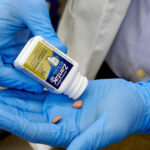The U.S. individual major-medical market is evolving toward consumer-driven products as a natural reaction to the growing number of self-employed, uninsured people, along with a segment of the working class that can’t afford health coverage.
According to a special report released last week by the A.M. Best Co., the individual indemnity industry, which includes non-health maintenance organizations and non-Blue Cross/Blue Shield plans, was enhanced with the enactment of health savings accounts in 2003 that make the individual major-medical market more attractive to those who would be uninsured otherwise, while also offering a lower-priced alternative for price-conscious consumers.
Several insurance companies are either entering or re-entering the marketplace, which will ultimately increase the level of competition in a historically volatile business.
Success in the coming years will be measured by how determined players are in maintaining stringent risk management, while preserving distribution channels and controlling expenses. This gives an inherent advantage to the established companies within the individual major-medical segment, along with the organizations entering the market that already have scale and a capital position to survive a downward cycle.
During the past few years, A.M. Best has observed that most individual writers are continuing to report good earnings. Unlike previous experience in which companies cautiously entered the market because of its volatility and regulatory constraints, a number of organizations have entered the market for profitability, growth opportunities and market position.
Among the largest impacts on the individual market was the introduction of health savings accounts late in 2003 with the passage of the Medicare Modernization Act. These tax-enhanced accounts are similar to individual retirement accounts and are intended to encourage individuals to take a greater stake in their medical spending by managing their own health-care expenses. They primarily are utilized by individuals who participate in high-deductible medical plans, with deductibles starting at $1,000 and most commonly at about $2,500.
A.M. Best views the overall outlook for the individual indemnity major-medical companies as stable. However, there will be additional challenges for companies that have limited experience or lack sufficient size in this ever volatile market.
Already there are signs that the market is entering a downward cycle, although the profitability to date has remained good. A.M. Best has noticed organizations loosening their underwriting margins and focusing on market share.
Was this article valuable?
Here are more articles you may enjoy.

 Sanofi to Pay $100 Million to Settle Zantac Cancer Lawsuits
Sanofi to Pay $100 Million to Settle Zantac Cancer Lawsuits  Supplemental Claims Don’t Need to Include Damage Estimates, Fed Appeals Court Says
Supplemental Claims Don’t Need to Include Damage Estimates, Fed Appeals Court Says  Smartmatic, One America News Settle Election Defamation Lawsuit
Smartmatic, One America News Settle Election Defamation Lawsuit  CoreLogic Report Probes Evolving Severe Convective Storm Risk Landscape
CoreLogic Report Probes Evolving Severe Convective Storm Risk Landscape 